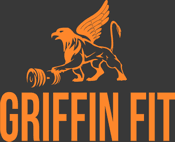Training Formats
by Tia Dewick in Training

So when we go to the gym we can all admit there are times when someone says something and we honestly have no clue what they are talking about! So I thought why not write a blog on terminology, just to clear up any confusion about any queries you may have! So, let’s talk about training formats. Training formats are how you coach or trainer will plan out your session; AKA how your exercises flow from one to another. You may have heard your trainer mention before words like; Superset, Tri-set, and Drop-set or pyramid set… These all relate to your training format; so, let’s go through what they really mean!
- Superset – a superset is two exercises completed back to back within the same set. The two exercises will usually work the same muscle group to have a larger overloading effect. E.g. Split Squat and Sumo Squat
- Tri-set – similar to a Superset but this uses three exercises back to back within the same set; all working the same muscle group. E.g. Single arm row, Face pull, and Lat pull down
- Drop-set – this involves using one exercise, starting on your heaviest weight for a set amount of reps, you will then drop to the next weight down and complete as many reps as possible until failure. You will then repeat this until you are on the lowest weight possible.
- Negative Reps – this involves controlling the amount of time you spend on one part of the exercise. It usually involves holding the lowering phase of the exercise for 3-5 seconds. E.g. On a pull up going at your normal pace for the upward phase and then lowering for 5 seconds.
- Pyramid Sets – this involves starting an exercise on a lower weight for more reps, then on each set after increasing your weight but lowering the number of reps you do. E.g. on a Romanian deadlift starting at 40kg for 12 reps, then the next weight moving to 50kg for 10 reps and so on.
- Isometric holding reps – this involves including time under tension into your training regime. So at the point of the exercise where you are most under stress you will hold the weight in place for 3-5 seconds. Such as on a Single arm row when the weight reaches its highest point you will hold it there for 3 seconds before lowing back down. This means that the longer the muscle is under tension, the more the muscle in stimulated – which will result in greater muscle development.
- Ascending-sets – during this the trainer will select a number of sets for you to complete with two different weights – (lightest and heaviest). You will then go from the lightest weight completing a set amount of reps and go straight into your heaviest weight with no reps. This will continue for the numbers of sets your trainer decided on at the start.
So what do they do? The reason trainers involve different training formats is to prevent a plateau from occurring. It allows you to continue performing basic compound movements whilst still gaining the reward! It will also keep you challenged and mean your training never gets boring!
